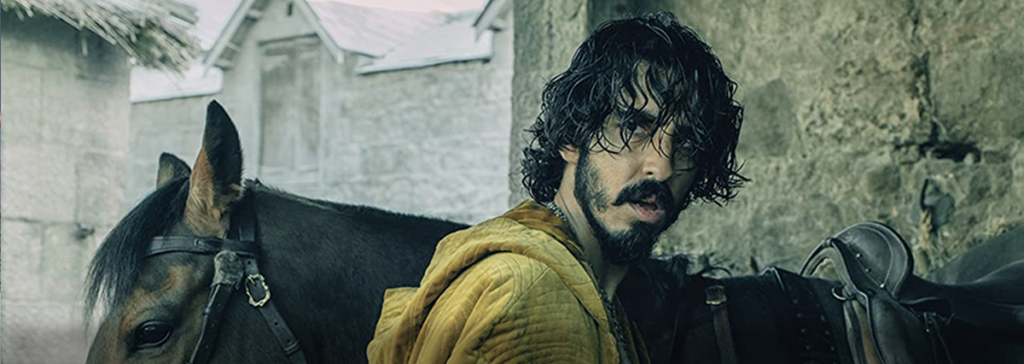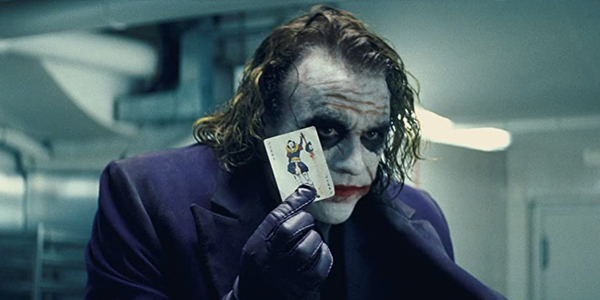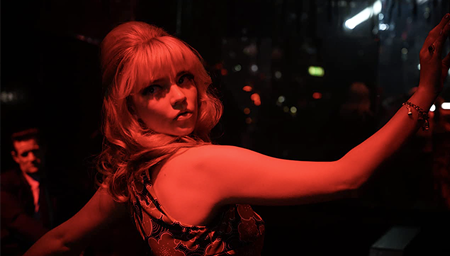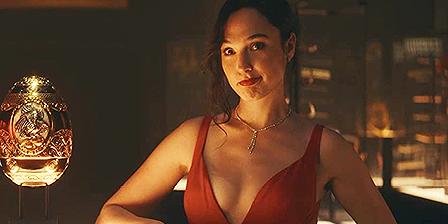
review | The Green Knight
David Lowery’s take on the medieval legend is both faithful and revisionist, and sumptuously gorgeous throughout
by Dennis Burger
August 26, 2021
There are, as best I can tell, three main reasons one might adapt an Arthurian legend for the silver screen. The first—and I submit Guy Ritchie’s awful Legend of the Sword as Exhibit A—could best be described as an attempt to create a crowd-pleasing modern action blockbuster with a built-in audience for which the director has little respect.
The second—and I’ll submit John Boorman’s well-intentioned and engaging but overwrought Excalibur as Exhibit B—generally boils down to a desire to create a fantasy film and recognition of the fact that there are fewer legal barriers to entry when adapting works in the public domain.
The third main impulse for adapting such works largely comes from a desire to illuminate, interpret, and start a discussion about why these stories still hold such sway in the modern mind. David Lowery’s The Green Knight largely falls under this umbrella.
I say “largely,” because it’s a difficult film to pin down. It’s partly a screen adaptation of the famous 14th Century epic poem, but partly a commentary on it. Even as I finish typing that, though, it feels wrong. The Green Knight isn’t so much commentary as it is a prompt for conversation, exploration, and reexamination of the source material. It’s more a question than an answer.
It is, in many ways, Lowery’s way of telling the audience what this story means to him, and what lessons he thinks there are for modern audiences to learn in its medieval text. Interesting as that is, though, far more interesting is the room Lowery leaves the viewer to reflect on their own relationship with the poem and its place in the modern world.
If you haven’t guessed from all the above rambling, The Green Knight is at times a very abstract work of cinema. Those unfamiliar with the source will likely be lost occasionally, and those more familiar with the poem will just as likely be pushed off balance by the elements of the original that Lowery is slavishly faithful to, those that he elides and expands, and the unrelated medieval legends he weaves into his narrative to reinforce the themes he wants to accentuate. It’s a weird mix of reverence and revisionism that certainly won’t be to everyone’s taste.
The one thing we can all agree on is that this is a sumptuously gorgeous film. There are long stretches that can only be described as pure audiovisual experience, and with the benefit of Theater at Home delivery via Vudu, I found myself tempted at times to reach for my remote and pause the film just to get lost in the perfect composition of a frame, the lushness of the colors, the richness of the contrasts, and the depth of the shadow detail. I resisted that temptation, since this is a work intended to be viewed in motion. But the temptation was there.
Shot in 6.5K and finished in a 4K digital intermediate, the imagery is packed to the gills with detail of the sort that actually enhances the experience rather than merely throwing more pixels at your screen. Despite the judicious and effective employment of CGI, the film also relies on some old-school tricks of the trade, seemingly as a reminder that this isn’t an alternate reality to which you can escape but rather a piece of art on which to reflect. In Vudu’s Dolby Vision presentation, you can clearly see the reliance on matte paintings, an artform that Hollywood has been poorer for since abandoning.
It’s true that there are a number of low-contrast shots throughout, especially low-light sequences photographed indoors with natural light, which means blacks aren’t always the inkiest and the image flattens out a bit, especially when compared with the most dramatic outdoor shots. But all of this seems intentional, and the dynamic metadata of Dolby Vision allows for each new shot to be tone-mapped to the capabilities of your display. Long story short, this is one of the few films I’ve seen recently where Dolby Vision isn’t merely a technical nicety but a borderline necessity to keep the image from devolving into a puddle of indistinct grays in a handful of shots.
There are a few fleeting moments of banding in Vudu’s streaming rental (less than one second in total, I reckon), but I’m half-convinced this banding is baked into the master. And I say this because the opening scene—with its eye-reactive highlights and deep shadows and the quick transitions between those two extremes—is the sort of image you would forgive for being a bit banded even on full-bandwidth UHD Blu-ray. But I didn’t see a hint of such.
The expanded gamut of Dolby Vision also effectively captures the nuances of cinematographer Andrew Droz Palermo’s imagery, adding some additional richness to the fabrics and foliage and conveying in seconds what the original poet sometimes took multiple stanzas to articulate.
As for the audio, I feel like a bit of a broken record for saying this but once again we have a Premium VOD rental whose levels haven’t been optimized for home cinemas. My best estimation is that it’s mastered about 4.5dB below reference levels, so go ahead and crank up the volume from the giddy-up (assuming you’re renting it via Vudu—other providers might have tweaked the levels).
I wish I could tell you more about the mix, but I was so hypnotized by the film that I rarely noticed the technical aspects of the sound, aside from the aforementioned stretches that could best be described as pure audiovisual experience. But, measuring things by my personal yardstick, I’d say that’s the mark of really effective sound design. It’s never distracting, but it is carefully orchestrated, thoughtful, and always clear in its delivery of dialogue—assuming, again, that you give your volume knob a bit of a twist to the right.
For the past few days, since I staked claim to this movie for review, my colleague John Sciacca has been hammering my text-messaging inbox, asking me for my assessment of it. And I’m still not sure I’ve fully made up my mind about the film just yet, nor am I sure I ever will, despite the fact that I’ll be buying it the instant it’s permanently released to home video.
“Did you like it?” he asked me last night, I suppose tiring of my vacillating and ambivalating. I’m not sure that’s the right question, to be honest. What I will say is: The film continues to haunt me. I simply cannot shake it. It has also, in some not-so-subtle ways, changed my relationship with the text of Sir Gaiwan and the Green Knight. Or, it would be more accurate to say, it has prompted me to reassess that relationship on my own terms.
I sat down last night to re-read the poem, not through Lowery’s lens, but rather through a lens of my own making that Lowery nudged me into grinding and polishing myself. I reached for Tolkien’s translation, always my first choice for its fidelity and excellent footnotes. A few pages in, though, I found myself longing for something different, something more energetic. So, I put down the Tolkien and picked up my less-well-worn copy of Simon Armitage’s more recent translation, which I’ve never quite been able to give myself over to completely. Something changed after having seen The Green Knight. The immediacy and energy of Armitage’s verse rang truer to me than the scholarly pedanticism of Tolkien.
Of course, the Professor’s interest in the poem was always more philological, whereas Armitage’s is undeniably more emotional. I can appreciate that now. In fact, as ashamed as I am to admit this, I think I love both translations in equal measure, but for different reasons.
I’m not sure I ever would have reached that point without having seen The Green Knight. And although I’m not sure this was Lowery’s intention with the film, I’m sure he’d be pleased to hear it.
Dennis Burger is an avid Star Wars scholar, Tolkien fanatic, and Corvette enthusiast who somehow also manages to find time for technological passions including high-end audio, home automation, and video gaming. He lives in the armpit of Alabama with his wife Bethany and their four-legged child Bruno, a 75-pound American Staffordshire Terrier who thinks he’s a Pomeranian.
PICTURE | The imagery is packed to the gills with detail of the sort that actually enhances the experience rather than merely throwing more pixels at your screen.
SOUND | The sound design is never distracting but carefully orchestrated, thoughtful, and always clear in its delivery of dialogue.
© 2025 Cineluxe LLC





